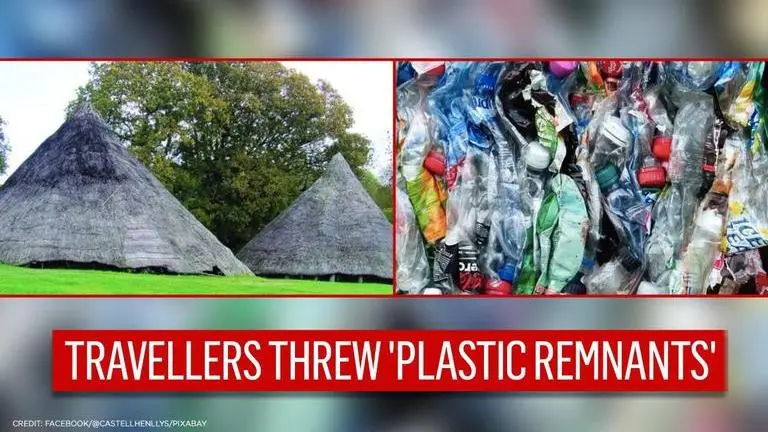Updated 7 January 2021 at 19:51 IST
Archaeologists excavate 2,000 plastic items at historic 'Iron Age' site in UK
Archaeologists excavated spoons, eyeglasses, bottle caps, straws, mobile phone batteries, paint can lids, candy wrappers, and plastic wrap at a historic site.
- World News
- 2 min read

Researchers in the Welsh Pembrokeshire Coast National Park on January 6 excavated nearly 2,000 pieces of plastic at the historically significant Iron Age village of Castell Henllys, UK. According to a new study published in the Antiquity paper, scientists revealed that they tackled tons of plastic remnants. Spoons, eyeglasses, bottle caps, straws, mobile phone batteries, paint can lids, candy wrappers and plastic wrap found. The plastic excavation at the former hillfort in Wales wasn’t a surprise to the scientists as they had rung an alarm about the hazardous impact and dangers of the non-biodegradable waste product on the planet.
Castell Museum had reconstructed two replica Iron Age roundhouses at the heritage site from Iron Age that existed long before the synthetic material was invented. The iron age village, once inhabited by at least 100 people some 2,000 years ago, is toured by the visitors and children. At the rural site of the hill fort that dons historic homes with conical roofs, archaeologists dug out plastic amid the excavation at the site to obtain iron age tools and other significant material from the past era. This was the only site open to the public and schools for over 35 years, lead researcher and professor of archaeology at the University of Liverpool, Harold Mytum informed the sources of CNN. Countless tourists visited Cook House and the Earthwatch house, the two popular rounded home structure that replicated the Iron Age settlement.
Advertisement
Plastic pollution 'extensively worrying'
While the scientists cleared the village on time, tourists spread the plastic litter around the historic site for over 30 years. “The nature and extent of the cultural material recovered accurately reflect known activities at this heritage site, but also reveals an unexpected amount of plastic debris in archaeological contexts, indicating how, even in well-managed contexts, plastic is entering terrestrial deposits,“ researchers wrote in the paper. The recovery of the huge amount of plastic debris in the late first millennium BC iron Age site was “extensively worrying”, they added. Researchers had erected the long-term experimental reconstructions of Iron Age timber roundhouses on the sites of the original excavated structures, utilising site-specific archaeological evidence for over several years. Plastic pollution posed the threat of eradicating Welsh history, researchers asserted. The plastic accumulated over the years was now a challenge to the scientists.
Advertisement
Published By : Zaini Majeed
Published On: 7 January 2021 at 19:51 IST
